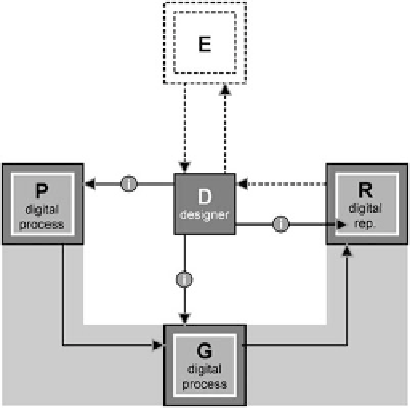Information Technology Reference
In-Depth Information
Fig. 14.4 Performance-
based process of
design. R representation,
D designer, P performance,
for informing processes within open-source social networks, computational
design methods would require the capability to support a shared computational
design representational system.
Traditional representations in design are focused upon the representation of
the design object. Visual representations are non-explicit with respect to
presenting the structural logic behind the construction and the design develop-
ment of the object under design. In order to achieve this provision of information
there is a need to explicate the logic that is embedded in process-models of
design. This is a key characteristic for the achievement of successful processes
of crowdsourcing design: the knowledge and constructive logic must be made
explicit within the computational system of representation.
One promising method to achieve this level of richly informed socially-based
design is the exploitation of a generic approach to parametric design. Represen-
tational formalism of parametric design can potentially be shared among
designers in crowdsourcing design. This approach offers different methods of
representation such as algorithmic languages, scripting and coding as a basis for
forms of process-based representation in crowdsourcing design. In parametric
design, computational algorithms play an important role in generating, manip-
ulating and evolving the design solutions.
14.3 Parametric Schema for Crowdsourcing Design
In the following section we illustrate, demonstrate and discuss how by exploiting
the concept of the parametric design schema as a common shared representational
environment through which the wisdom of the crowd can be integrated in a multi-
phase design model illustrating theses ideas in Pre-design, Conceptual design and
Post-design.

Search WWH ::

Custom Search